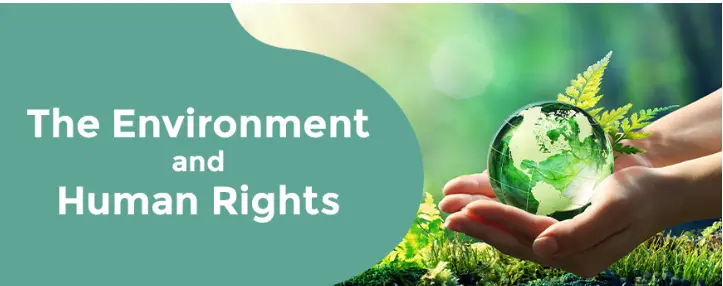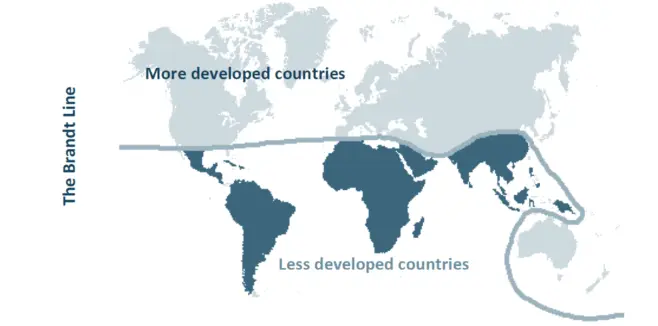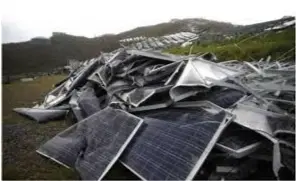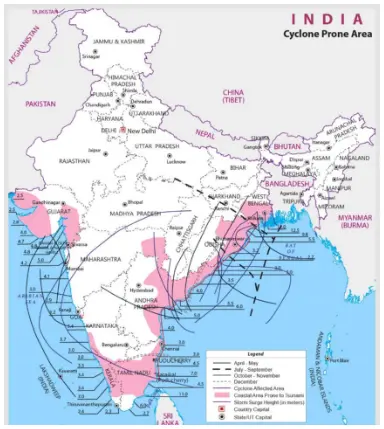Tuesday, 9th April 2024
Prevention of Money Laundering Act
In News: In its Lok Sabha election manifesto, the Congress pledged to halt the weaponization of the Prevention of Money Laundering Act (PMLA) if entrusted with power.
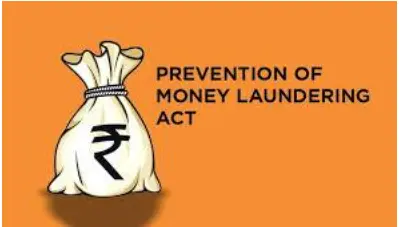
Background of PMLA
- Originating from global efforts to combat terrorism financing and illicit money movement.
- Established in response to UN General Assembly's declaration urging member states to enact anti-money laundering laws.
- FATF's creation in 1989 prompted India's commitment to anti-money laundering measures.
Enactment of the PMLA
- Introduced as the Prevention of Money-Laundering Bill 1998 under the Atal Bihari Vajpayee government.
- Aims included preventing money laundering, confiscating proceeds of crime, and coordinating anti-money laundering efforts.
- Faced opposition due to concerns over "draconian" provisions, leading to parliamentary review and eventual passage in 2002.
Key Amendments in the PMLA
- Significant amendments in 2009 and 2012 expanded the PMLA's scope and enforcement capabilities.
- Addition of 'Criminal conspiracy' under IPC Section 120B empowered the Enforcement Directorate (ED) to pursue cases beyond traditional PMLA offenses.
- Granting of international jurisdiction to track laundered money in 2009 expanded enforcement reach.
- 2012 amendment elevated Prevention of Corruption Act, 1988 to Part A of PMLA, imposing stricter bail conditions for corruption-related offenses.
Supreme Court's Views on PMLA
- Vijay Madanlal Choudhary & Ors vs Union of India (2022)
- SC upheld PMLA's constitutional validity, affirming ED's powers and procedures.
- Nikesh Tarachand Shah v Union of India (2017)
- Struck down stringent bail provisions in PMLA as unconstitutional.
- Parliament reinstated these provisions via Finance Act, 2018, upheld by SC in 2021.
- Some aspects of the 2021 ruling, such as non-disclosure of ECIR by ED, are subject to review.
Source: IE
Industrial Alcohol Regulation
In News: Currently, a 9-judge Constitution Bench led by the Chief Justice of India (CJI) is hearing a case concerning the authority of states to regulate and impose excise duty on industrial alcohol.
Constitutional Debate Regarding Industrial Alcohol
Constitutional Framework
- State List (Entry 8): Grants states the authority to legislate on intoxicating liquors' production, possession, etc.
- Union List (Entry 52): Empowers Parliament to regulate industries in the public interest.
- Concurrent List (Entry 33): Allows both states and the Centre to legislate on industries, ensuring no conflict with central laws.
Key Issue
- The central question revolves around whether states possess the autonomy to regulate industrial alcohol or if exclusive control lies with the Centre.
Legal Interpretation
- Subjects in the Concurrent List can be regulated by both states and the Centre, without contradiction.
- The Industries (Development and Regulation) Act, 1951 implies central control over industrial alcohol regulation.
Arguments of the States
- Interpretation of Entry 8: States argue that "intoxicating liquors" encompass all alcoholic liquids, drawing on historical excise laws.
- Scope of Union's Power: Contention is made that Union List Entry 52 doesn't extend to post-denaturation products like industrial alcohol, suggesting control falls under Concurrent List Entry 33 unless specifically ordered by the Centre.
- Preservation of States' Powers: Caution is expressed against diminishing states' authority, citing precedents like the ITC Ltd v Agricultural Produce Market Committee Case, 2002.
Other Similar Cases
- Synthetics & Chemicals Ltd v. State of Uttar Pradesh Case, 1989: SC upheld Centre's exclusive control over industrial alcohol regulation.
- Ch Tika Ramji v State of UP Case, 1956: SC affirmed states' authority to legislate in industries, even with central laws in place.
Excise Duty
- Indirect tax imposed on goods for their production, licensing, and sale.
- Applied to domestically manufactured goods, with specific application to petroleum and liquor.
- A crucial component of state revenue, with states often adjusting excise duty rates to boost income, such as Karnataka's 2023 hike in Additional Excise Duty on Indian Made Liquor.
|
UPSC Previous Year Questions Mains (2019) Q. Enumerate the indirect taxes which have been subsumed in the Goods and Services Tax (GST) in India. Also, comment on the revenue implications of the GST introduced in India since July 2017. Mains (2017) Q. Explain the salient features of the Constitution (One Hundred and First Amendment) Act, 2016. Do you think it is efficacious enough “to remove cascading effect of taxes and provide for common national market for goods and services”? |
Source: IE
Preventive Detention
In News: In a recent judgment, the Supreme Court emphasized that advisory boards established under preventive detention laws should not merely serve as "rubber-stamping authorities" for the government's decisions.
Background
- Laws authorizing preventive detention date back to British colonial rule in India, with origins as early as 1818.
- Notable enactments include the Defence of India Act of 1915, which was reenacted during the Second World War, both of which featured provisions for preventive detention.
Definition and Purpose
- Preventive detention involves the apprehension and detention of individuals without trial or conviction by a court of law.
- Its primary objective is not punitive; instead, it aims to forestall individuals from engaging in potential criminal activities in the future, thus preventing harm to society.
Grounds and Types
- Grounds for preventive detention typically include concerns related to state security, maintenance of public order, and considerations of foreign affairs.
- There are two main types of detention:
- Preventive detention, which involves detaining individuals based on suspicions of potential criminal acts.
- Punitive detention, which occurs post facto, serving as a punishment for offenses already committed.
Legal Protections
- Article 22 of the Constitution of India provides essential safeguards for individuals subjected to preventive detention.
- This includes the provision for the formation of advisory boards, comprising individuals qualified to be High Court judges, tasked with reviewing detention orders every three months.
Issues and Concerns
- Impact on Democracy: There are concerns regarding the compatibility of preventive detention with democratic principles, given its circumvention of the traditional judicial process.
- Extrajudicial Authority: Governments may sometimes misuse preventive detention laws to exert extrajudicial authority, leading to arbitrary detentions and potential human rights violations.
- Misuse of Other Laws: Laws like the Unlawful Activities (Prevention) Act, 1967, could potentially be exploited for preventive detentions, raising concerns about misuse and overreach.
- Manipulation by Officials: District magistrates and law enforcement agencies may resort to preventive detentions as a means to control law and order issues, sometimes even in situations where it might not be warranted, leading to questions of abuse of power.
Supreme Court's Views
- Ameena Begum Case, 2023: The Supreme Court has underscored that preventive detention should be an exceptional measure utilized in emergency situations and should not be employed as a routine practice.
- Ankul Chandra Pradhan Case, 1997: This case emphasized that the primary objective of preventive detention is to avert harm to the security of the state rather than to administer punishment to individuals.
Public Order and Law & Order
About
- Public order pertains to the maintenance of peace, stability, and harmony within society, ensuring that activities and behaviors do not disrupt the overall well-being or safety of the community.
- Parliament and State Legislatures possess the authority to enact laws concerning public order and law and order.
Distinction
- The Supreme Court has made a clear distinction between 'public order' and 'law and order', where 'public order' concerns affect the broader community or even the nation at large, while 'law and order' issues are more localized in nature.
Way Forward
- Recommendations by the National Commission to Review the Working of the Constitution (NCRWC) suggest revisiting preventive detention provisions, proposing measures like extending the maximum detention period and enhancing advisory board composition.
- The Supreme Court's recent observation underscores the exceptional nature of preventive detention powers, suggesting a need for their sparing use and caution against their misuse for ordinary law and order issues.
Source: TH
Consumer Confidence Survey
In News: The most recent bi-monthly survey conducted by the Reserve Bank of India (RBI), known as the Consumer Confidence Survey, revealed a notable surge in consumer confidence, marking its highest level since mid-2019.
Consumer Confidence Survey (CCS)
About
- The Reserve Bank of India (RBI) conducts a bi-monthly Consumer Confidence Survey to gauge consumers' perceptions of the prevailing economic situation.
- The survey is conducted across various cities and assesses consumer confidence on parameters such as the economy, employment, prices, income, and spending.
- Participants are surveyed regarding their sentiments on various factors both in the current situation and looking ahead to the future.
Key Findings of the Survey
- Conduct and Demographics
- The survey for March 2024 was conducted from March 2 to 11, with over 6,000 participants contributing insights.
- Female respondents accounted for 50.8 percent of the sample, ensuring a diverse representation.
- Current Situation Index (CSI)
- Measures overall consumer sentiment regarding the present economic situation.
- Experienced a 3.4-point increase compared to the previous survey, reaching 98.5, its highest level since mid-2019.
- Future Expectations Index (FEI)
- Analyzes consumer sentiment for the next 12 months.
- Saw a significant uptick, hitting its peak since mid-2019, indicating a positive outlook for the coming year.
- CSI and FEI are compiled based on net responses on economic situation, income, spending, employment, and price level for the current and future periods.
- Households’ Inflation Expectation Survey
- Shows a slight increase in the share of households expecting overall prices and inflation to rise over the next three months and one year.
- Reflects sentiments on general prices and various product groups, compared to the previous survey round.
- Improvements in Sentiments
- Notable improvements in households' sentiments regarding the general economic situation and employment prospects, for both the present period and the upcoming year.
- Highlighted positive outlooks for investment activity in India, as emphasized by RBI Governor Shaktikanta Das.
Conclusion
Shaktikanta Das highlighted optimistic prospects for investment activity in India, citing factors like an upturn in private capex cycle, robust government capital expenditure, healthy balance sheets of banks and corporates, and rising capacity utilization.
Source: IE
Suvidha Portal
In News: Recently, the Election Commission announced that its Suvidha portal has received over 73,000 applications since the announcement of the Lok Sabha polls, with these applications seeking permission for various campaigning activities.
About Suvidha Portal
- Developed by the Election Commission of India (ECI), Suvidha Portal is a technological solution aimed at ensuring a level playing field and upholding democratic principles during elections.
- The portal streamlines the process of obtaining and acting upon requests for permissions and facilities from political parties and candidates during the election period.
- It operates transparently on the First in First Out principle, catering to a diverse range of permission requests related to election activities.
- Political parties and candidates can easily submit permission requests online from anywhere and at any time, ensuring convenience and accessibility.
- Offline submission options are also available to promote inclusivity and equal opportunity for all stakeholders.
- The portal handles permissions for various activities such as organizing rallies, opening temporary party offices, door-to-door canvassing, using video vans and helicopters, obtaining vehicle permits, and distributing pamphlets.
- Supported by a robust IT platform and managed by nodal officers across various state departments, Suvidha Portal facilitates efficient processing of permission requests.
- A companion app is available for applicants to track the status of their requests in real-time, enhancing convenience and transparency.
- The permission data available on the portal serves as a valuable resource for scrutinizing election expenditures, contributing to greater accountability and integrity in the electoral process.
Source: TOI
Satpula Dam
In News: Delhi's oldest surviving Satpula dam, constructed during the 14th century, remains steadfast and enduring to this day.

Satpula Dam: An Architectural Marvel and Historical Landmark
- Constructed during the reign of Sultan Muhammad Shah Tughlaq (1325-1351), Satpula derives its name from 'sat' meaning seven and 'pull' meaning openings of a bridge.
- Made from Delhi quartz sourced from the Aravallis, Satpula was an integral part of the defensive wall of Jahanpanah, the fourth city of Delhi.
- Serving dual purposes, it provided a reliable water source for irrigation while also serving as a defense against potential intruders.
- The selection of the topography was crucial, opting for a large open plain suitable for storing water for irrigating expansive flat lands, resulting in the development of a structure complete with sluice gates and a reservoir.
- The vicinity's association with Sufi saint Nasiruddin Mahmud, known as Chirag Dehlavi, led to the belief among people that the canal water possessed healing properties.
- For centuries, the area hosted a Diwali mela, attracting attendees who would partake in a holy dip in the waters, believing in its spiritual significance, and even collect some to take home.
Source: IE
Windfall Profits
In News: Amid an extended ban on onion exports, farmers and traders express discontent over the government's decision to permit some shipments to markets such as the UAE. These shipments have reportedly been sold at significantly low prices, resulting in windfall profits for specific importers.
Understanding Windfall Profits and Windfall Tax
- Windfall profit denotes a sudden surge in profits, typically triggered by unforeseen events or circumstances.
- These profits usually exceed historical norms and can arise from factors like price spikes, supply shortages, or other temporary or enduring factors.
- While windfall profits are often enjoyed by entire industry sectors, they can also benefit individual companies or even individuals.
- Various factors can lead to windfall profits, including sudden shifts in market structure, government executive orders, court rulings, or significant changes in trade policy.
- On an individual level, windfall profits or gains might manifest as a sudden increase in income due to specific one-time events like winning the lottery or inheriting valuable assets.
- Businesses often allocate windfall profits towards increasing dividends, repurchasing shares, reinvesting in future growth, or reducing debt.
- Windfall profits frequently attract a windfall tax, which governments impose on certain industries experiencing significantly above-average profits during favorable economic conditions.
Source: TH
Funding Winter
In News: In 2023, investments from prominent foreign investors such as Accel, Peak XV Partners, Tiger Global, and Softbank experienced a substantial decline, averaging around 80 per cent.
Understanding Funding Winter: Implications and Effects
- Funding winter denotes a phase of market correction in capital inflow, reducing the likelihood of startups securing high valuations in the short to mid-term.
- Essentially, founders encounter challenges in raising funding and attaining lofty valuations during this period.
- Investors tend to steer clear of firms lacking a clear path to profitability, necessitating a correction in the startup's value.
- One significant effect of funding winter is the need for business owners to reassess their priorities, focusing more on profit maximization.
- Effects:
- Startups adapt measures to conserve working capital, anticipating minimal funding expectations from investors during the funding winter.
- Advertising expenses, capital expenditures, and expansion plans are halted to enhance the firm's sustainability.
- Only essential expenditures for the firm's survival are undertaken, while unnecessary expenses are avoided.
- Funding winter is a cyclical phenomenon influenced by various factors affecting the flow of investments in the market.
- These factors may encompass geopolitical unrest, monetary policies, financial irregularities, or sector-specific issues.
- The duration of a funding winter is unpredictable and may persist for an extended period, contingent upon the interplay of multiple factors.
Source: BS
Mangal Pandey
In News: Mangal Pandey, whose role was significant in the Sepoy Mutiny of 1857, is commemorated annually on April 8, marking the anniversary of his death.
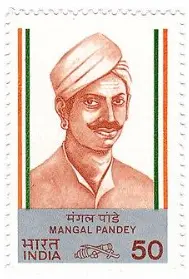
Mangal Pandey: The Hero of India's First War of Independence
- Mangal Pandey played a pivotal role in India's inaugural rebellion against British rule in 1857, earning him the title of the hero of the first war of Independence, also known as the Sepoy Mutiny of 1857.
- Early Life:
- Born on July 19, 1827, near Faizabad in Uttar Pradesh.
- In 1849, Pandey enlisted in the army of the British East India Company, serving as a sepoy in the 6th Company of the 34th Bengal Native Infantry stationed in Barrackpore.
- Rebellion against East India Company:
- Pandey revolted against the East India Company's introduction of cartridges greased with animal fat, which offended the religious sentiments of the soldiers.
- His actions sparked a widespread movement among rebels, leading to a mass uprising against colonial rule. Common people also joined in opposing anti-India laws.
- On March 29, 1857, Pandey mutinied by firing at his Senior Sergeant Major. Subsequently, he was subdued, arrested, and ultimately hanged on April 8, 1857, following a Court Martial order at Lal Bagan in Barrackpore.
- As a repercussion of his revolt, his regiment, like the 19th infantry at Behrampore, was disbanded due to its display of resentment against the colonial administration.
Source: IE
Minibrains
In News: Mini brains grown in laboratory settings offer a potential avenue for elucidating the mechanisms underlying the increased risk of dementia associated with concussions and other traumatic brain injuries (TBIs).

Understanding Lab-Grown Minibrains: Origins and Applications
- Lab-grown minibrains, scientifically termed brain organoids, serve as miniature, simplified models of full-size human brains.
- Minibrains Formation:
- Scientists typically generate brain organoids from stem cells, which are immature cells capable of differentiating into various cell types.
- Stem cells utilized for organoid production can originate from adult human cells or, less commonly, human embryonic tissue.
- Adult cells are subjected to chemical exposure to induce reversion into a stem cell-like state, known as induced pluripotent stem cells (iPSC), capable of differentiating into any tissue type.
- These iPSCs are then embedded in a protein-rich matrix or grown atop a physical, 3D scaffold to facilitate their growth and formation into a three-dimensional structure resembling a brain.
Applications
- Minibrains have potential applications in basic research, aiding in understanding brain development and function.
- They also hold promise in drug development, serving as models for testing the efficacy and safety of pharmaceutical compounds.
- Furthermore, minibrains may find utility in computer science, particularly in the development of neural networks and artificial intelligence systems.
Source: LS
World Health Day 2024
In News: India's health equity challenges necessitate a comprehensive strategy that goes beyond mere enhancements in healthcare infrastructure.
World Health Day 2024 and Health Equity
About
- World Health Day on April 7th annually highlights the importance of health equity, emphasizing it as a fundamental human right.
- The theme for World Health Day 2024 is "My Health, My Right", echoing the need for equitable access to healthcare.
Understanding Health Equity
- Health equity ensures equal opportunities for individuals to achieve optimal health, considering social, economic, and environmental factors influencing health outcomes.
- The World Health Organization (WHO) aims to eliminate unjust health disparities among different social and economic groups, delving into underlying causes like poverty, discrimination, and limited access to basic necessities.
Need for Health Equity
- Disparities in healthcare access and outcomes are exacerbated by factors like pandemics, climate change, and socio-political unrest, with India facing significant challenges due to its diverse population and socioeconomic gaps.
- Rural areas in India experience notable healthcare access disparities compared to urban areas, compounded by social and economic barriers.
Global Challenges
- The COVID-19 pandemic and environmental crises have exacerbated existing healthcare disparities globally, with over half of the world's population lacking full access to vital health services according to WHO estimates.
Achieving Health Equity
- Comprehensive Approach
- Addressing health equity necessitates holistic efforts transcending legislative reforms, focusing on social and economic determinants of health.
- Collaboration between governments, communities, and individuals is crucial to dismantling barriers to healthcare access.
Challenges in India's Health Equity
- Population Factor
- India's large and diverse population poses challenges in achieving health equity, leading to disparities in healthcare outcomes and access, particularly in rural areas and urban slums.
- Social Disparities
- Profound disparities exist across caste, gender, and economic status lines, as evidenced by data showing variations in child mortality rates and immunization coverage.
- Non-communicable Diseases (NCDs)
- Non-communicable diseases (NCDs) pose significant challenges, with equitable access to treatment and preventive healthcare essential to mitigate their impact.
Government Initiatives
- Initiatives like Ayushman Bharat and the National Health Mission demonstrate the government's commitment to reducing health disparities by expanding access and strengthening healthcare infrastructure.
Strategies for Progress
- Health Literacy
- Raising health literacy levels empowers individuals to seek equitable care and make informed health decisions, crucial for addressing health disparities.
- Collaboration
- Collaboration between public and private healthcare sectors, NGOs, and community organizations is essential for delivering services and addressing regional health concerns.
- International Collaboration
- Collaboration with international institutions supports health initiatives and facilitates resource-sharing to strengthen healthcare systems.
- Accessibility and Research
- Efforts to enhance accessibility and affordability, alongside research initiatives, contribute to evidence-based practices and policies, advancing health equity goals.
Conclusion
A concerted effort involving all sectors of society is necessary to address health equity issues and ensure universal access to high-quality healthcare. Collaboration, inclusivity, and evidence-based approaches are key to promoting equitable health outcomes for all.
Source: TH
Share the article
Edukemy’s Current Affairs Quiz is published with multiple choice questions for UPSC exams
MCQ
Get Latest Updates on Offers, Event dates, and free Mentorship sessions.

Get in touch with our Expert Academic Counsellors 👋
Frequently Asked Questions
UPSC Daily Current Affairs focuses on learning current events on a daily basis. An aspirant needs to study regular and updated information about current events, news, and relevant topics that are important for UPSC aspirants. It covers national and international affairs, government policies, socio-economic issues, science and technology advancements, and more.
UPSC Daily Current Affairs provides aspirants with a concise and comprehensive overview of the latest happenings and developments across various fields. It helps aspirants stay updated with current affairs and provides them with valuable insights and analysis, which are essential for answering questions in the UPSC examinations. It enhances their knowledge, analytical skills, and ability to connect current affairs with the UPSC syllabus.
UPSC Daily Current Affairs covers a wide range of topics, including politics, economics, science and technology, environment, social issues, governance, international relations, and more. It offers news summaries, in-depth analyses, editorials, opinion pieces, and relevant study materials. It also provides practice questions and quizzes to help aspirants test their understanding of current affairs.
Edukemy's UPSC Daily Current Affairs can be accessed through:
- UPSC Daily Current Affairs can be accessed through Current Affairs tab at the top of the Main Page of Edukemy.
- Edukemy Mobile app: The Daily Current Affairs can also be access through Edukemy Mobile App.
- Social media: Follow Edukemy’s official social media accounts or pages that provide UPSC Daily Current Affairs updates, including Facebook, Twitter, or Telegram channels.

